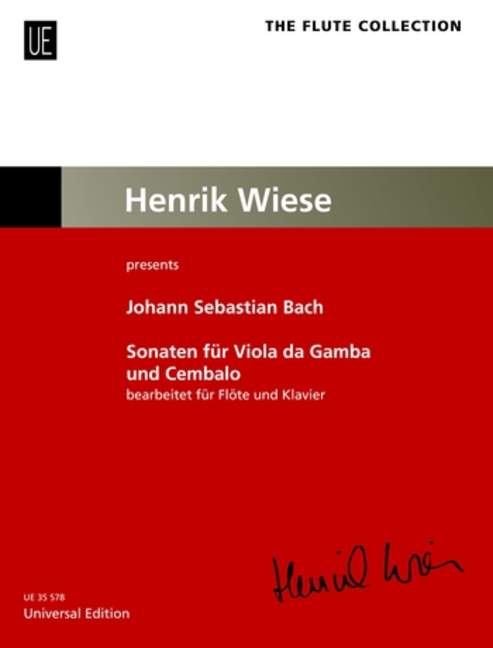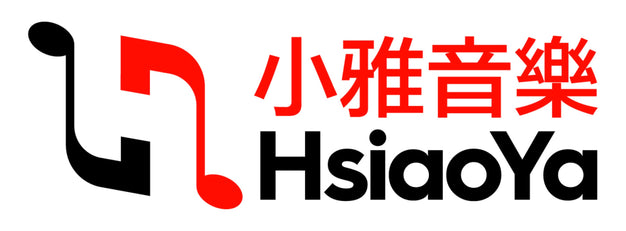
Sonatas for Viola da Gamba and Harpsichord Henrik Wiese presents 巴赫约翰‧瑟巴斯提安 钢琴三重奏 奏鸣曲古提琴大键琴 环球版
将三首冈巴奏鸣曲 BWV 1027 - 1029 编曲改编为长笛和大键琴或钢琴伴奏,初看起来似乎相当大胆。巴赫在这些奏鸣曲中使用的中提琴的三个八度音域(B-e flat2)及其低音域与巴洛克横笛的音域(d1-e3)截然不同。然而,巴赫的 G 大调中提琴与大键琴伴奏奏鸣曲 BWV 1027 却将中提琴与长笛文学联系在一起。此外,还有一首双长笛与低音连奏三重奏奏鸣曲 BWV 1039。第一长笛声部与甘巴奏鸣曲中的大键琴右手相对应。第二长笛声部在甘巴上的音低八度。在本版本中,所有三首冈巴奏鸣曲都是根据这一历史记载的声部交换和八度转调原则编排的长笛和大键琴伴奏。唯一的例外是 BWV 1029 中 g 小调奏鸣曲的副歌。在这里,我们省去了声部交换,以减少音乐文本的变化。这三首乐曲都是为历史悠久的乐器编配的。我们严格遵守横笛和巴赫大键琴的音域。对于现代伯姆长笛能让演奏更接近原作的段落,我们用小号字体印出了备选曲目。长笛部分的音域有限,因此也适合用双簧管或小提琴演奏。本改编版以 BWV 1027-1029 号冈巴奏鸣曲和 BWV 10391 号双长笛与低音连奏三重奏奏鸣曲的历史资料为基础。对于 BWV 1027/1039 奏鸣曲的编曲,则首选三重奏奏鸣曲版本。只有在第三乐章(Adagio)中才使用了甘巴奏鸣曲中的低音提琴声部,以避免在大键琴上出现三重奏奏鸣曲中音色较弱的重复。历史数据中的错误和不完善之处已得到更正,不再赘述。不过,在本版本中,我们决定不对长笛和大键琴部分之间或平行段落之间的演奏标记和装饰音进行统一。主要的数据源都是复制品,完全不清楚其中的演奏标记和装饰音在多大程度上可以追溯到巴赫。可能的调整不一定是增添--按照惯例,也可能涉及删除或更正。这意味着有许多可能的、同样有效的解决方案,此类艺术决定应留给演奏者。亨利克-维泽(2012 年 8 月,慕尼黑)入围美国国家长笛协会新出版音乐奖"
作曲家: Bach Johann Sebastian
校订者: Wiese, Henrik
乐器: flute (transverse flute, oboe or violin) and piano (harpsichord)
出版社: Universal Edition
曲目:
Sonata (G-Dur, BWV 1027/1039) · Sonata (D-Dur, BWV 1028) · Sonata (g-Moll, BWV 1029
原文简介:
Arranging the three gamba sonatas BWV 1027 – 1029 for flute and obbligato harpsichord or piano may at first seem rather daring. The three-octave range of the viola da gamba (B – e flat2) that Bach used in these sonatas along with its low register are quite different from that of the baroque tranverse flute (d1 – e3). Yet Bach’s Sonata for viola da gamba and obbligato harpsichord in G-major BWV 1027 links the gamba and flute literature. It also exists as a Trio Sonata for two flutes and basso continuo BWV 1039. The first flute part corresponds to the right hand of the harpsichord in the gamba sonata. The second flute part sounds an octave lower on the gamba. In the present edition all three gamba sonatas have been arranged for flute and obbligato harpsichord according to this historically documented principle of voice exchange and octave transposition. The only exception is the Adagio from the Sonata in g-minor BWV 1029. Here we dispensed with voice exchange so as to reduce the number of changes in the musical text. All three arrangements are intended for historical instruments. The ranges of the tranverse flute and of Bach’s harpsichord have been strictly observed. Alternatives printed in small font are included for those passages where the modern Böhm flute allows one to play closer to the original. The limited range of the flute part means it is also suitable for performance on the oboe or violin. The present arrangement edition is based on historical sources for the gamba sonatas BWV 1027–1029 and the Trio Sonata for two flutes and basso continuo BWV 1039 1. For the arrangement of the Sonata BWV 1027/1039 the Trio Sonata version was preferred. Only in the third movement (Adagio) was the basso voice from the gamba sonata used so as to avoid the repetitions of the trio sonata that are less sonorous on the harpsichord. Errors and imperfections in the historical sources have been corrected without further comment. In the present edition we decided, however, against the consistent alignment of the performance markings and ornamentation between the flute and harpsichord parts or between parallel passages. The principal sources are all copies and it is totally unclear to what extent the performance markings and ornamentation they include can be traced back to Bach. Possible adjustments need not be additions – as is customary – but can also involve deletions or corrections. This means that there are many possible and equally valid solutions and such artistic decisions should be left to the performer. Henrik Wiese (Munich, August 2012) Finalist "Newly Published Music Award" of "The National Flute Association (U.S.A)
难度: intermediate - easy
